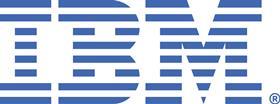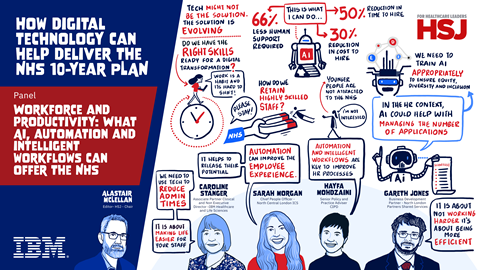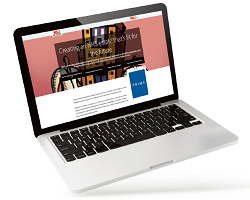Digital technology has a big part to play in helping the NHS deliver the ambitions of the forthcoming 10-year plan and address immediate operational pressures, such as the need to reduce waiting times to access elective care. The 3 December HSJ summit, in association with IBM, looked at how this could happen and what role AI might have in it.
In association with
A panel session on workforce and productivity unearthed several ways in which technology is shaping the future of recruitment.
Gareth Jones, business development director of the North London Partners Shared Service, said technology had helped them reduce their time to hire from 35 days to around 14, which also reduced agency spending.
Mr Jones added robotic automation helped staff work smarter, not harder, but much of the achievement was down to being able to use technology across a large patch. “When you deploy at scale you can actually really increase the value in terms of hitting your return on investment,” he said.
North Central London Integrated Care System chief people officer Sarah Louise Morgan said trusts needed to think carefully about how they used technology to attract and retain younger staff, pointing out that applying for an NHS job could take 59 minutes, compared to two with Bupa.
“We talk a lot about AI and all those great things, but we don’t really get the basics right,” she said.
IBM has been using itself as client zero to radically reform how it works and reduce costs. Caroline Stanger, associate partner and clinical leader, IBM, said there was no reason why the NHS could not benefit from some of the time savings in administrative back-office functions which improved both productivity and staff experience.
However, AI may be affecting organisations, whether they are using it themselves, or not: one attendee pointed to the growing number of applications they were seeing for each job, something they suggested was due to applicants using AI.
Mr Jones was clear there could be legitimate reasons for applicants to use AI – including concern about their ability to communicate clearly – and its use did not mean applicants should be ruled out. But he pointed out that AI was only ever as good as the technology behind it and there was a risk of conscious or unconscious bias being reflected in algorithms.

However, adopting new technologies needs to be planned and accompanied by workforce changes. Ms Morgan said investment would be needed to help staff make this shift.
Organisations also need to decide what they are happy to compromise on, said Hayfa Mohdzaini, senior policy and practice adviser for the CIPD. “There are so many solutions out there and it is about finding the ones that you are happy [with]… and the ones which would make your work more enjoyable.” As an example, she mentioned ambient voice technology, which would help consultants to take notes more rapidly.
Ms Stanger added: “I don’t assume the solution to this is technological. The solution is about how we involve our people and get them excited about the opportunities that the reduction in administrative and repetitive stuff is going to bring.”
HSJ will be running more articles from the summit over the next fortnight.
How AI could make dashboards redundant within the next 10 years
- 1
- 2
- 3
 Currently reading
Currently readingHow technology is overhauling NHS recruitment
- 4
- 5






























